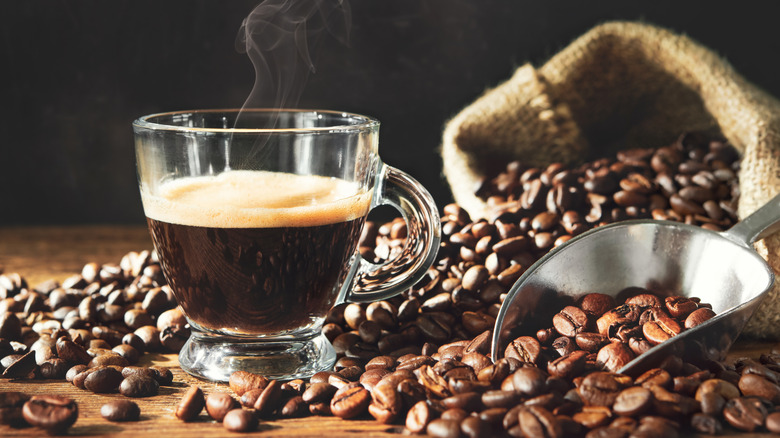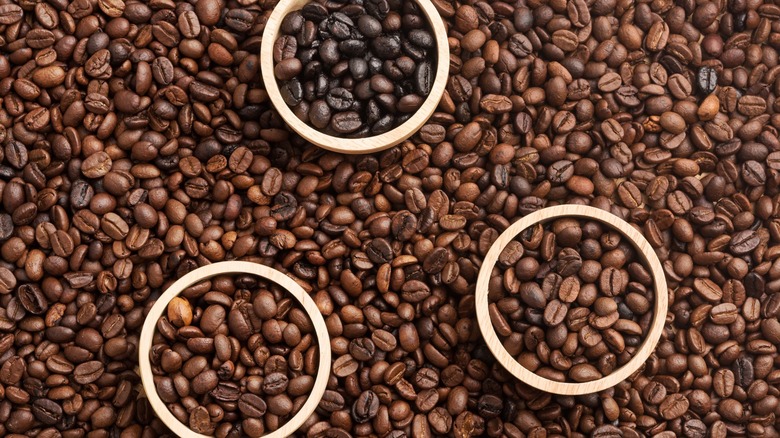The Type Of Roast Used For Breakfast Blend Coffee
Whether you shop for coffee at the grocery store, a roastery, or an independent cafe, you've no doubt been somewhat boggled by the sheer number of different coffee blends available. One of the most common is the breakfast blend. Specifically designed with morning in mind, breakfast blends provide that necessary lift that most of us need before we walk out the door on a weekday. But how exactly does it provide such a lift? It uses a light type of coffee roast.
Light roasts are the polar opposite of the more classic dark roasts. Light-roasted beans do not stay in the roaster for long after their "first crack" — that is, the popping sound beans make at a certain heat — which prevents them from developing an overly intense flavor. Instead, they are roasted just long enough to give the coffee body. In terms of flavor, a lot depends on the quality of the coffee and the roasters in question. Light roasts can be just as flavorful, if not more so, than dark roasts. Breakfast blends, specifically, are defined by their even-keeled flavor. Nothing too bold, but nothing too mild, either.
The more subtle flavor of a light roast is revealed in layers. There's sweetness combined with notes of fruit and flowers. These flavors make excellent accompaniments to sweet breakfast pastries, parfait, fruit bowls, oatmeal, and even more savory items like egg sandwiches and omelets. But apart from flavor, there is one big reason why light roasts are almost universally used to make breakfast blends: caffeine.
Light roasts have more caffeine per scoop
While the caffeine content of a coffee bean is fairly stable throughout the roasting process, on a scoop-by-scoop basis, lighter roasts are going to have a higher caffeine content than dark roasts. Because light roasts are not roasted for very long, the beans are still relatively dense. Dark roasts, by contrast, have lost a good amount of their mass. So, when coffee is ground up and spooned into the filter, you're actually using more light roast than dark simply because there are more dense, fully intact coffee beans ground up in each scoop.
If you measure your coffee by weight, there is little difference in caffeine levels between light and dark roasts. However, how many among us are going to weigh out our coffee at six in the morning? Most of us measure by scoop, especially if we use a standard drip pot. Measuring this way with a light roast means that you are going to get slightly more caffeine in your cup.
This is something roasters certainly have in mind when they are preparing beans for a breakfast blend. They are designed to wake you up, while also being neutrally flavored enough to create the perfect vessel for milk and creamers. Now, this is not to say that you can't enjoy a medium or dark roast as your morning cuppa. But if you're buying breakfast blends, chances are you're buying light roast.

